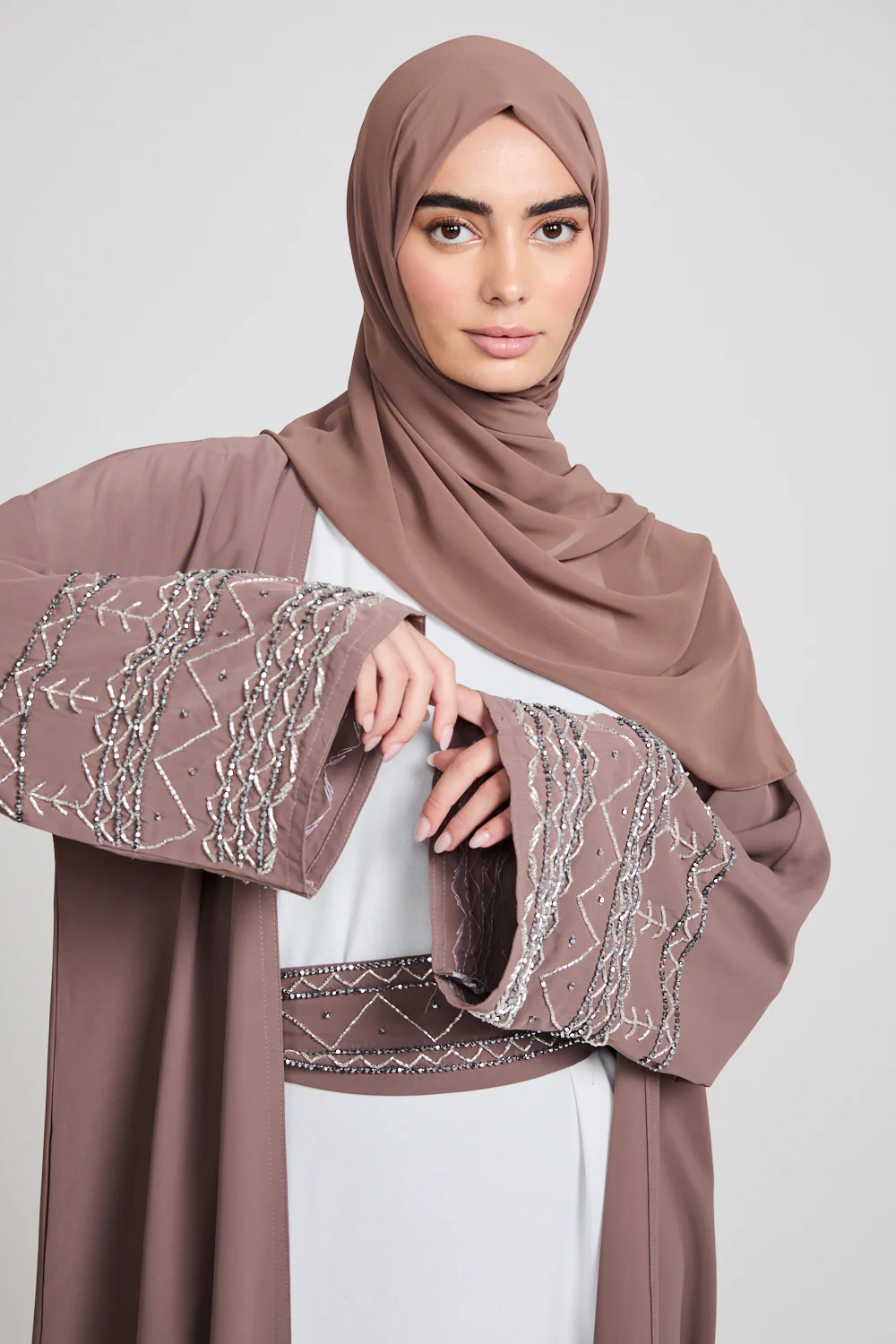The abaya (عباءة) is more than a piece of fabric — it is a symbol of tradition, identity, and elegance in the Arab world. Its roots stretch back thousands of years, to a time when women in the desert wore long cloaks to protect themselves from the sun, wind, and sand. Over time, this practical garment became an expression of modesty, respect, and cultural identity.
The earliest abayas were simple, black, and loose, made from heavy fabrics to provide full coverage and protection in the harsh desert environment. As time passed, they began to take on softer fabrics, finer textures, hand embroidery, and decorations in gold and silver thread.
In the modern era, the abaya has experienced a renaissance.
It has become a fusion of tradition and fashion — an unmistakable symbol of elegance, femininity, and cultural pride. Contemporary designers across the Gulf, especially in Saudi Arabia, Qatar, and the United Arab Emirates, have given the abaya new meaning. It is no longer merely a symbol of modesty but also a form of artistic expression.
Today, the abaya appears both on fashion runways and in everyday life, still preserving what lies at its core — the dignity, mystery, and sacredness of the woman who wears it.

